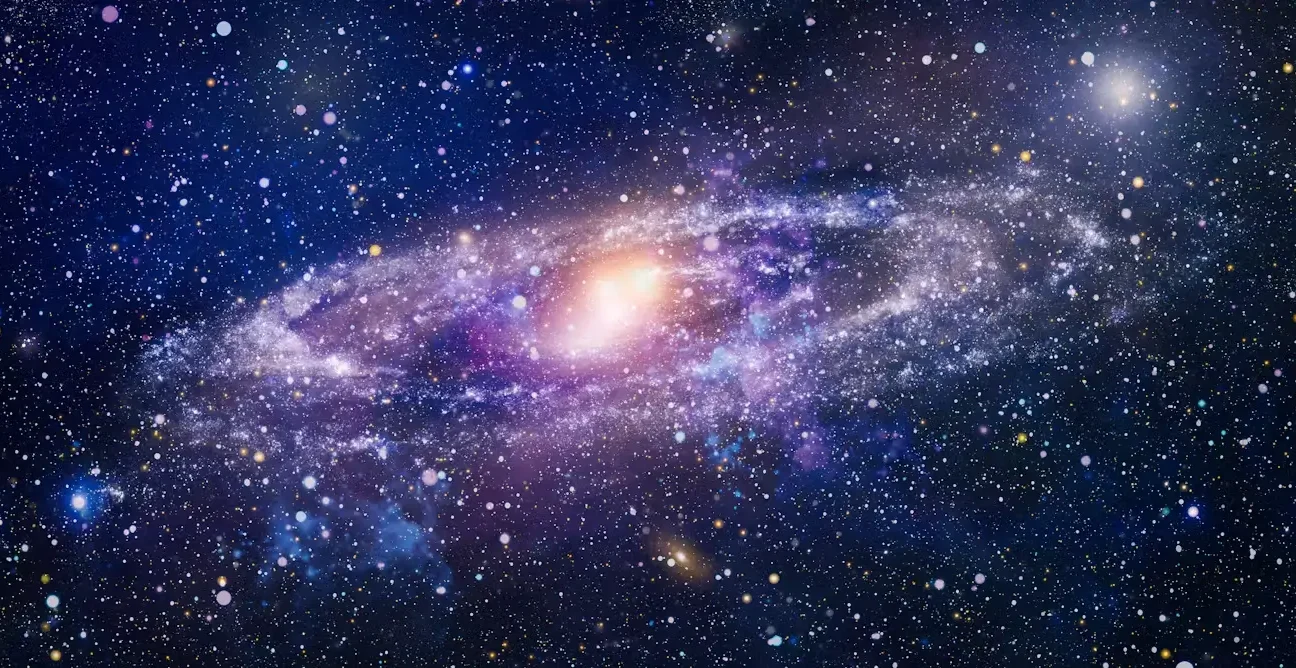Most people associate galaxies with the relaxing spiral amphitheatre of the Milky Way or the magnificent Andromeda display. Yet, among the endless varieties of galactic formations, few inspire as much curiosity as the so-called “Galaxia La Picosa.” The English translation of “the spicy galaxy” creates an image of this cosmic object that is much more intense than other space bodies.
This article will examine the features, historical unearthing patterns, and contemporary scientific investigations of the space object known as Galaxia La Picosa. The tradition of calling something Picasa implies spicy fire in everyday situations, but astrophysicists use its meaning metaphorically. Astronomers and enthusiastic scientists use this word to describe high-energy events in the galaxy, which are characterized by its powerful core activities. The examination begins with what differentiates Galaxia La Picosa from all the billion galaxies illuminating our universe.
The Spicy Phenomenon: What Makes It Picosa?
According to initial observation, Spicy does not naturally apply as an adjective to describe galaxies. Continent La Picosa remains a stellar accumulation of celestial matter alongside gas, dust, and dark matter rather than chilli peppers. The active, energetic behaviour that constantly releases intense radiation made Galaxia La Picosa known by its spicy nickname. The galactic nucleus of this active entity is classified as an AGN, frequently producing strong ionized particle jets and emission-energy streams.
A supermassive black hole at the galactic centre draws nearby stellar contents to itself, resulting in this phenomenon. Matter approaching an event horizon sets into motion the creation of an accretion disk. The disk temperature reaches millions of degrees, which produces fast-moving particle collisions. Massive photon energy bursts form from “hot” radiation events during which energetic particles create these spectacular yet random radiative streams that leave the system.
Scientists track her energy levels because La Picosa reacts differently from quiet galaxies that produce stable outputs throughout the years. Scientists observing Galaxia La Picosa have monitored sudden intense flare-ups interrupted by temporary dimness before returning to high activity levels. The unpredictable nature of La Picosa, combined with its fiery activity, makes it hold the “spicy” status among astronomers.
Discovery and Initial Observations
The astronomical world knows Galaxia La Picosa as a beloved entity, although it remained unobserved for a prolonged period. The majority of human civilization existed without recognizing its presence. During the early stages of astronomy, people did not have the instruments needed to identify separate galaxies, while their telescopes showed only blurred island-shaped celestial formations. In the late twentieth century, science advanced through modern telescopes to allow astronomers to identify and compile listings of active galaxies.
The first recognition of Galaxia La Picosa emerged from researchers’ wide-ranging sky surveys in the mid-1980s. Space observatories operating with radio and infrared capabilities detected radio signals from a particular region in the sky that released atypical amounts of variable radiation. Observations done by improved instruments made it possible to detect the galaxy’s typical eruptive patterns and energetic core. Astronomers eventually discovered the galaxy was not a typical star cluster because it operated as an energy generator through a supermassive black hole.
The exceptional characteristics of the active galactic nucleus Galaxia La Picosa rested in its intense brightness and its speedy changes in its radiation pattern. While active galaxies experience typical changes in their activity, Galaxia La Picosa stood out through its particularly prominent explosive energy output. The distinctive patterns of activity caused researchers to name it spicily.
The Role of the Central Black Hole
The centre of Galaxia La Picosa hosts a massive supermassive black hole with a mass equivalent to several billion Suns. Such enormous black holes commonly exist in big galaxies, but they show considerable differences in their activity levels. An abundant and dense collection of gas and dust surrounds the black hole at the heart of Galaxia La Picosa. The material pulled toward the core creates the disk, which becomes an interconnected zone where gravity, magnetism, and friction work together.
The exceptional quantities of energy created from the accretion disk mainline ensure the existence of the galaxy’s explosive outbursts. The energy accumulation in Galaxia La Picosa drives magnetic fields to form fast and enormous jets emitting from both poles at nearly light speed. The features of high-energy particles from Galaxia La Picosa expand more than 1000 light-years, making this galaxy one of the significant generators of X-ray and radio emissions.
Research on the central black hole and its environment will lead to insights into Galaxia La Picosa’s unusual activity. Astronomers monitor this region through multiple observatories, especially the Chandra X-ray Observatory and Hubble Space Telescope satellites, which operate from space. Operating as a radio array, the Atacama Large Millimeter/submillimeter Array (ALMA) has revealed precise details about the accretion disk’s shape and jet emission properties.
Implications for Galaxy Evolution
Galaxia La Picosa presents remarkable scientific value alongside its visible light display. Scientists use this active galaxy as an observatory to investigate how black holes transform their host galaxies through active galactic nuclei. Nuclear energy output from the active nucleus functions to heat and remove neighbouring gas particles, eventually stopping new star formation. The central black hole guides the total development of its galaxy through its influential manipulation.
The “feedback” process operates exceptionally forcefully within the galaxy structure of Galaxia La Picosa. Years of intense energy outflows have remodelled the structure of this galaxy by changing the position of stars and gas and dust distributions. Scientists who examine these changes obtain essential knowledge regarding galaxy transitions from vigorous star-forming to dormant states.
Research about Galaxia La Picosa could clarify the mechanisms that link supermassive black holes with their parent galaxies. Scientists are exploring why galaxies operate as active systems throughout many billions of years compared to their rapid transition to quiescent states. Scientists are uncertain what sequences of events drive a galaxy to start producing stars intensely and what processes finally calm this stellar activity. The study of these questions leads to understanding fundamental properties regarding galaxy lifecycle patterns and universal power mechanics.
Future Observations and Theoretical Developments
Modern technological progress enables better observation of objects like Galaxia La Picosa. Scientists expect upcoming technology, including JWST and next-gen radio observatories, to reveal more details about AGNs’ complex activities. Scientists create a comprehensive description of how a black hole interacts with its environment through the combination of X-ray and radio wave observations while adding intermediate wavelength results.
Science modelling works alongside observations to interpret the nature of Galaxia La Picosa. Advanced simulation models enable astronomers to evaluate potential models for the galaxy’s development through testing. Theoretical models reproduce the black hole gas intake process while displaying magnetic field effects on jets and the resulting energy dynamics around the galaxy. Researchers validate their scientific ideas and enhance their knowledge of cosmic phenomena by cross-checking simulations with actual observational records.
Conclusion
Galaxia La Picosa distinguishes itself as a vibrant celestial explosion that violates regular galactic tranquillity. The active galactic nuclei display powerful eruptive conduct, demonstrating how such celestial bodies modify their surroundings across the universe. Scientists continue to observe this peculiar cosmic event to discover its hidden secrets, which will lead to a deeper understanding of space’s fundamental laws.
The label “Galaxia La Picosa” describes the space body’s brilliant appearance and symbolizes the universe’s energetic outer limits. From the countless numbers of galaxies in the cosmos emerge several brilliant celestial bodies that produce unpredictable flames of energy which intrigue our intellectual curiosities while stimulating our deep-space explorations.
More to Read: SteamRip
FAQ’s
1. What is Galaxia La Picosa?
Scientists study Galaxia La Picosa because of its powerful active status, which originates from a central supermassive black hole and produces changing illumination patterns.
2. Why is it called “La Picosa”?
The scientific name in Spanish includes “La Picosa”, which means “the spicy one”, to describe the galaxy’s recurrent intense radiation bursts.
3. How was Galaxia La Picosa discovered?
Through sky survey activities in the 1980s, orbiting astronomers identified their first record of Galaxia La Picosa. Scientists followed up on radio and infrared wavelength observations that detected its anomalous emissions.
4. What makes this galaxy unique?
The recreational galaxy Galaxia La Picosa displays its exceptional status through two energetic jet streams combined with sudden brightness changes and intense effects from its central black hole, which cause astronomers to observe dramatic outbursts.
5. Why is Galaxia La Picosa important to scientists?
Scientists use research about Galaxia La Picosa to interpret black holes’ environmental behaviour, understand galaxy transformations, and understand active galactic nucleus operation.






